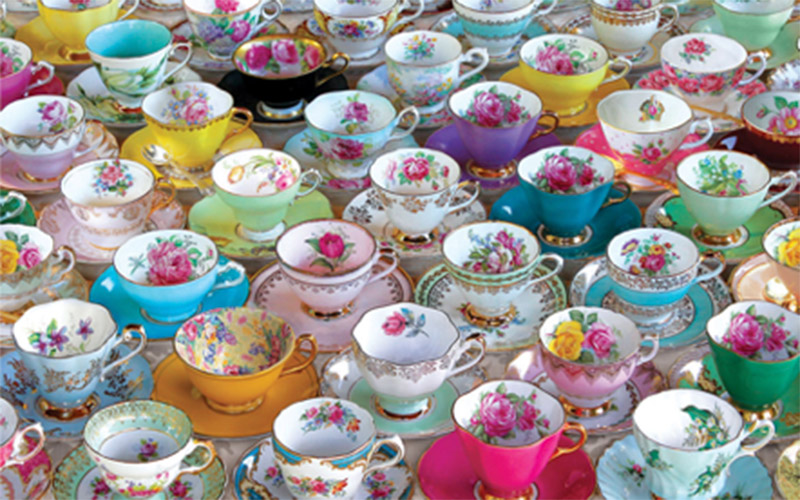Best china
A talking, reminiscence and drawing activity centred around “best” dinner sets from childhood memories.
You could plan this activity in one of the social areas when residents are having cups of tea. Use teacups as a way of setting the scene and begin a dialogue.
The aim of this activity is simply to start a conversation that will encourage residents to remember special or esteemed items which their families may have loved and cared for, and to share stories about a common theme. Encourage people to sketch as you talk. There is no pressure to create “perfect” drawings.
Materials Required:
- Pens or pencils and paper
- Some examples of mismatched crockery i.e. plates, saucers, cups, silverware, gravy boats, tablecloths. Anything will do, you won’t need an example of all the above, just what you can find around the home or your own home.
Top tip: If you go to boot sales or charity shops you can pick things up for a few pence. Maybe even ask the manager of a charity shop if they will set aside cracked or mismatched items that might have typically been thrown away.
Step by Step Guide:
- Collect visually interesting objects which relate to dinner sets such as plates, teacups and fancy cutlery
- Set the scene ready for residents by laying out the objects. You might want to lay out a pretty tablecloth, and serve tea from attractive mismatched tea cups, or serve cakes with mismatched unusual cutlery. Variety here is good, because we are hoping some of the designs might trigger memories of meals in the past.
- Chat! Now that the residents are comfy, engage with the items. Prompt the residents with questions such as:
Did your family have a special set of crockery that was only used for special occasions? Do you remember what it looked like?Where did you keep your best tea for guests? Who would serve it?
What sorts of food would be served on the crockery? Can you draw the design on the plates?
Do you remember where they were kept? Whose job was it to clean and put them away?
Who would be at the table? Tell me about your family.
- Using pens, pencils or any mark-making supplies you have, encourage the residents to draw the items on display, or even to try to draw objects from the past which they have mentioned today. They might want to draw around plates, and draw a meal they remember? They might want to draw the design which decorates the plates, cups or crockery. They might just simply want to enjoy a chat and listen to stories.
There are no rules.
- Record the comments, or write them down. If a resident mentions certain activities, you could develop this next time. For example, if a resident remarks about baking cakes and serving them on certain china- maybe you could have a go at baking or cake decorating together next time. Listen closely because inspiration can come from anywhere!
Ideas for Further Activities With This Idea:
Taking the conversations and tailoring activities for residents based on what they divulge and discuss could link into food/baking/metal work/still life
Adaptability
Ways to adapt for less able residents:
Take rubbings of spoons.
Use crockery to eat food or drink tea from, and simply chat about old cooking or eating rituals
Use the items as a focal point for discussion and a social gathering.
Ways to adapt from group to individual and vice versa:
This is a lovely activity to do as a group but it could also easily be done one on one or with visitors as there is no pressure to create. The conversation is the most important element.

